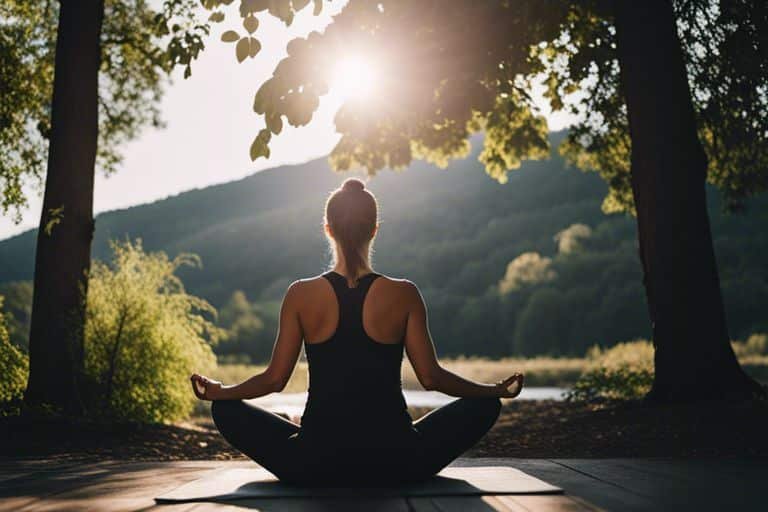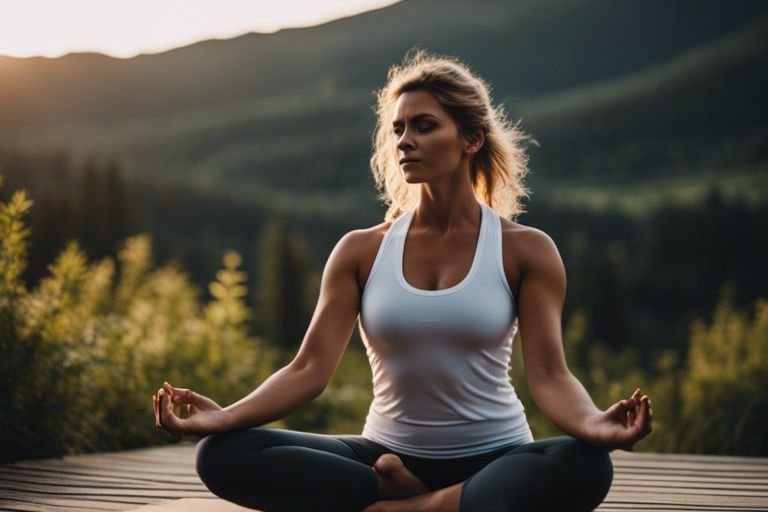MindBodyBalance Incorporating the ancient practice of yoga into your fitness routine is a transformative way to harmonize your mind and body. By embracing yoga, you can cultivate a state of balance, peace, and holistic wellness. This gentle yet powerful practice not only improves physical strength and flexibility but also nurtures mental clarity and emotional well-being. Discover the profound benefits of incorporating yoga into your daily fitness routine for a deeper sense of mind-body balance.
Key Takeaways:
- Balance: Incorporating yoga into your fitness routine helps achieve mind-body balance by focusing on breathing, mindfulness, and gentle movements.
- Stress Relief: Yoga can reduce stress levels and promote relaxation through various poses and meditation techniques that calm the mind and release tension from the body.
- Flexibility and Strength: Regular practice of yoga can improve flexibility, increase strength, and enhance overall physical well-being for a harmonious body and mind connection.

Benefits of Yoga for Mind-Body Balance
Reduces Stress and Anxiety
Your journey to mind-body balance through yoga starts with the profound benefits it offers for reducing stress and anxiety. An integral part of yoga practice is focused breathing and mindfulness, which activates the body’s relaxation response and helps calm the mind. By incorporating yoga into your fitness routine, you can release tension from the body and cultivate a sense of inner peace, leading to a reduction in stress levels and anxiety.
Improves Flexibility and Strength
The practice of yoga not only enhances flexibility but also builds strength in both the body and mind. The various poses and sequences in yoga help to stretch and lengthen muscles, improving overall flexibility. Additionally, holding these poses strengthens muscles, contributing to improved physical strength and balance.
Yoga helps to develop a strong and agile body, reducing the risk of injury in other physical activities, and promoting better posture and alignment. This improved physical strength also translates to mental strength, as the discipline and focus required in yoga poses challenge the mind and build mental resilience.
Enhances Mental Clarity and Focus
On your journey to mind-body balance, yoga serves as a powerful tool for enhancing mental clarity and focus. The combination of movement, breath, and mindfulness in yoga helps to quiet the chatter of the mind and bring a sense of clarity to your thoughts. This mental clarity allows you to be present in the moment, making better decisions and increasing your ability to concentrate on the task at hand.
Mental focus is crucial for overall well-being and productivity, and yoga offers a holistic approach to sharpening this mental faculty. By incorporating yoga into your fitness routine, you can experience a heightened sense of mental acuity, improved memory, and enhanced cognitive function, leading to a more balanced and focused mind.
Choosing the Right Yoga Style for You
You may find that incorporating yoga into your fitness routine could greatly enhance your mind-body balance. However, with so many different styles of yoga to choose from, it’s vital to find the one that best suits your needs and goals.
Hatha Yoga for Beginners
Beginners looking to ease into the practice of yoga may find Hatha yoga to be the perfect starting point. Hatha focuses on basic poses, breathing techniques, and meditation, making it ideal for those who are new to yoga. This gentle and slower-paced style helps to build a strong foundation and improve flexibility, making it an excellent choice for beginners.
Vinyasa Flow for Cardiovascular Benefits
On the other hand, if you are looking to elevate your heart rate and reap cardiovascular benefits, Vinyasa Flow could be the style for you. This fast-paced and dynamic form of yoga links breath with movement, creating a fluid sequence of poses that can help increase strength, stamina, and flexibility.
This style of yoga can also provide a good cardiovascular workout, making it a great option for those looking to improve their fitness level and burn calories.
Restorative Yoga for Relaxation and Recovery
Right
For instance, Restorative Yoga focuses on deep relaxation and stress relief, using props like bolsters and blankets to support the body in passive poses. This style is perfect for those looking to unwind, release tension, and promote healing and recovery after intense workouts or stressful days.
Creating a Yoga Practice Routine
Setting Realistic Goals and Schedules
All great things begin with a clear intention. When incorporating yoga into your fitness routine, it’s important to set realistic goals and schedules that align with your lifestyle. Start by identifying how many days a week you can commit to practicing yoga and for how long each session will be. Setting achievable goals will help you stay motivated and build a consistent practice.
Finding a Quiet and Comfortable Practice Space
Creating a serene environment for your yoga practice is important for cultivating a sense of peace and mindfulness. Look for a quiet and clutter-free space in your home where you can roll out your mat without distractions. Consider adding elements like candles, soft lighting, or calming music to enhance the ambiance and make your practice more enjoyable.
Creating a dedicated space for your yoga practice can help signal to your mind that it’s time to unwind and connect with your breath. This space doesn’t have to be large or elaborate; it simply needs to be a place where you feel at ease and can focus inward.
Investing in Essential Yoga Props and Equipment
Setting yourself up for success in your yoga practice includes having the necessary props and equipment to support your poses and enhance your experience. Essential items like a quality yoga mat, blocks, straps, and a bolster can help you deepen your practice and prevent injuries. Invest in these tools to ensure you have a safe and comfortable practice space.
An investment in the right yoga props and equipment can make a significant difference in your practice. High-quality materials can provide the support and stability you need to explore different poses and unlock new levels of flexibility and strength. Consider your individual needs and preferences when selecting props to tailor your practice to suit you best.
Breathing Techniques for Mind-Body Connection
Not only is yoga beneficial for physical fitness, but it also offers powerful breathing techniques that can enhance the mind-body connection. By incorporating these breathing practices into your fitness routine, you can cultivate a sense of calm, balance, and focus.
Diaphragmatic Breathing for Relaxation
Techniques such as diaphragmatic breathing can promote relaxation and reduce stress levels. This technique involves breathing deeply into your diaphragm, allowing your belly to expand as you inhale and contract as you exhale. By focusing on the breath and engaging the diaphragm, you can trigger the body’s relaxation response, leading to a sense of calm and tranquility.
Alternate Nostril Breathing for Balance
One of the most well-known breathing techniques in yoga is alternate nostril breathing. This practice involves using the thumb and ring finger to alternate closing off one nostril at a time while breathing. This technique is believed to balance the left and right hemispheres of the brain, harmonizing the mind and body. By incorporating alternate nostril breathing into your fitness routine, you can experience a newfound sense of balance and clarity.
Plus, alternate nostril breathing is also known for its ability to calm the mind, reduce anxiety, and improve focus. This practice can be especially beneficial before a workout or yoga session to center your thoughts and energize your body.
Kapalabhati Breathing for Energy and Vitality
For those looking to boost energy and vitality, kapalabhati breathing is a dynamic technique that involves quick, forceful exhalations followed by passive inhalations. This rapid breathing pattern stimulates the abdominal muscles and diaphragm, increasing oxygen flow and energy levels in the body.
For individuals seeking to invigorate their fitness routine, incorporating kapalabhati breathing can help awaken the senses, improve mental clarity, and enhance overall vitality.
Nostril
Yoga Poses for Physical and Mental Well-being
Downward-Facing Dog for Strength and Flexibility
One of the most well-known yoga poses, Downward-Facing Dog, is a great pose for building strength and flexibility in the entire body. This pose engages the arms, shoulders, back, and legs, providing a full-body stretch. By lengthening the spine and opening up the chest, Downward-Facing Dog helps improve posture and relieve tension in the back and neck.
Tree Pose for Balance and Focus
Focus is important in yoga, and Tree Pose is a wonderful pose to enhance your concentration and balance. By standing on one leg and bringing the sole of the other foot to the inner thigh or calf, you challenge your stability and improve your focus. Tree Pose also strengthens the muscles in the legs and core, helping you find your center both on and off the mat.
A steady gaze and steady breathing are vital in Tree Pose to maintain balance and focus. As you ground down through the standing foot and lift through the crown of your head, envision yourself as a strong and stable tree, rooted deeply into the earth.
Child’s Pose for Relaxation and Restoration
Strength and flexibility are important in any fitness routine, but so is rest and relaxation. Child’s Pose is a restorative yoga pose that provides a sense of calm and tranquility. By kneeling and folding forward with arms extended or alongside the body, you can release tension in the back, shoulders, and neck. This gentle pose also helps to quiet the mind and promote relaxation.
DownwardFacing Child’s Pose can be practiced at any time during your yoga practice, especially if you need a moment to rest and restore your energy. Focus on deepening your breath and surrendering any tension or stress with each exhale, allowing yourself to fully relax in this comforting posture.
Incorporating Yoga into Your Daily Life
Despite our busy schedules, finding ways to incorporate yoga into our daily lives can have profound benefits for our physical and mental well-being. Whether you are a beginner or a seasoned yogi, there are various ways to integrate this ancient practice into your daily routine to promote mind-body balance.
Starting Small with Morning Yoga Routines
Morning yoga routines are a wonderful way to start your day with intention and mindfulness. By dedicating just a few minutes each morning to gentle stretches and breathing exercises, you can set a positive tone for the day ahead. Begin with simple poses like Child’s Pose, Cat-Cow, and Downward-Facing Dog to awaken your body and center your mind. As you become more comfortable with these short sessions, you may choose to gradually increase the duration and intensity of your morning practice.
Using Yoga as a Warm-up or Cool-down for Other Exercises
An effective way to incorporate yoga into your fitness routine is to use it as a warm-up or cool-down for other exercises. Before a cardio or strength training session, a brief yoga sequence can help prepare your muscles and prevent injuries. Likewise, ending your workout with a series of yoga poses can aid in relaxation and muscle recovery. The fluid movements and focus on breath control in yoga can complement other forms of exercise, creating a holistic and balanced fitness regimen.
With the versatility of yoga, you can tailor your practice to suit your specific needs and preferences. Whether you prefer a vigorous Vinyasa flow to energize your body or a gentle Yin sequence to unwind and relax, there are endless possibilities to incorporate yoga into your fitness routine.
Practicing Yoga During Work Breaks for Productivity
Incorporating short yoga practices into your work breaks can help boost your productivity and overall well-being. Taking a few minutes to stretch and release tension from your body can rejuvenate your mind and improve focus. Simple poses like Seated Forward Fold, Neck Rolls, and Seated Spinal Twists can be done discreetly at your desk or in a quiet corner of your workplace. By incorporating these mini yoga sessions throughout your workday, you can enhance your performance and reduce stress levels.
Life can be hectic, but by weaving yoga into your daily routines, you can cultivate a sense of balance and harmony within yourself. Whether practiced in the morning, as a complement to other exercises, or during work breaks, yoga offers a holistic approach to wellness that nourishes both the body and the soul.
Final Words
So, incorporating yoga into your fitness routine for mind-body balance is not just about the physical practice but also about tapping into the deeper connection between your body, mind, and spirit. By embracing yoga, you open yourself up to a world of self-discovery, inner peace, and overall well-being. Keep in mind, it’s not about achieving perfect poses, but about the journey towards self-awareness and holistic health.
FAQ
Q: Why should I incorporate yoga into my fitness routine for mind-body balance?
A: Incorporating yoga into your fitness routine can help improve both your physical and mental well-being. Yoga promotes flexibility, strength, and balance in the body, while also calming the mind and reducing stress levels. This holistic approach to fitness can lead to increased overall health and a greater sense of well-being.
Q: How often should I practice yoga to experience the benefits?
A: Consistency is key when it comes to incorporating yoga into your fitness routine. Aim to practice yoga at least 2-3 times a week to start experiencing the benefits. As you progress, you may find that practicing daily or attending more frequent classes enhances your mind-body balance even further.
Q: What are some tips for beginners looking to start incorporating yoga into their fitness routine?
A: For beginners, it’s important to start slow and listen to your body. Consider taking a beginner’s yoga class to learn the basic poses and proper alignment. Focus on your breath and remember that yoga is a practice, not a performance. Be patient with yourself as you develop your practice and allow for growth and improvement over time.








